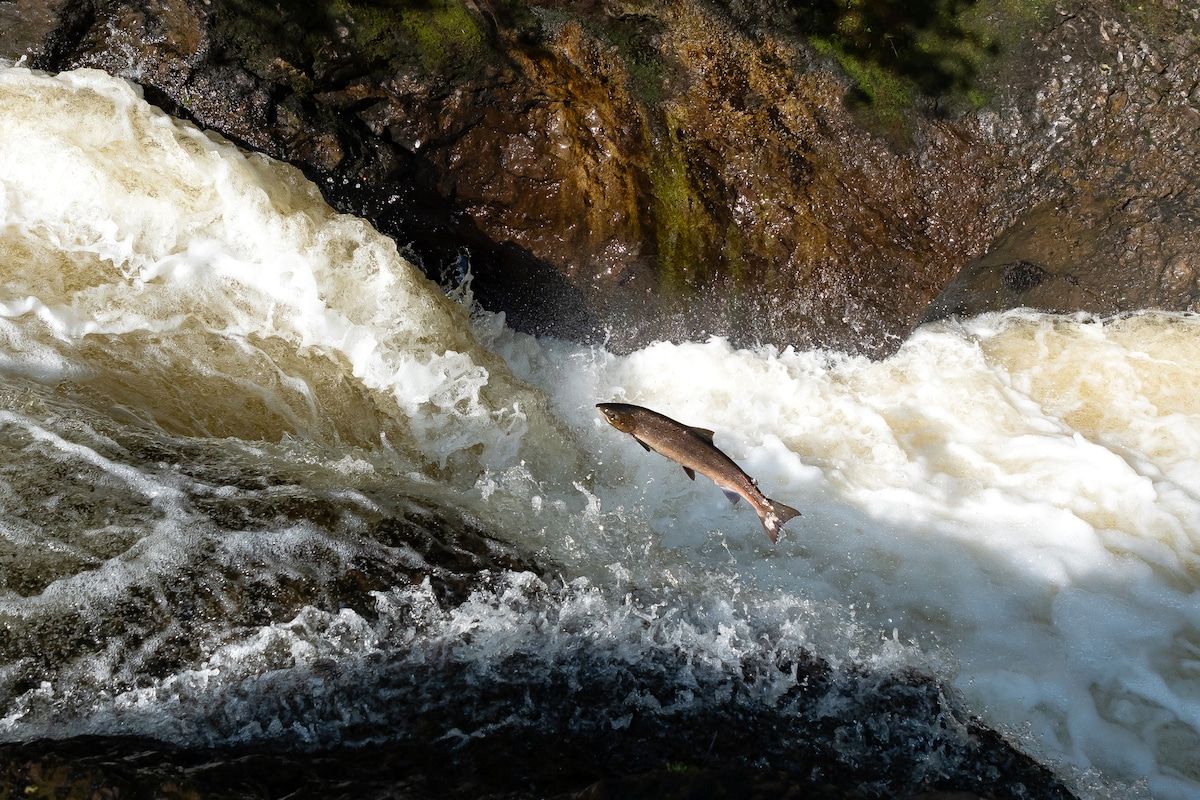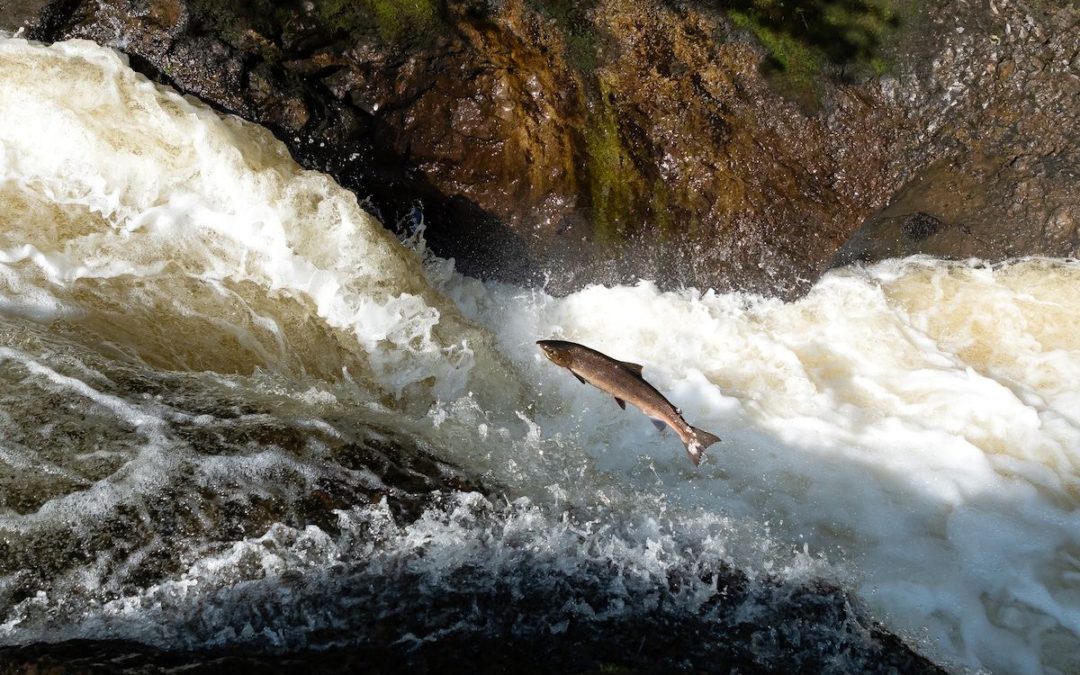
Because of the rising temperatures, the water in rivers, seas, and oceans is warming. One species that is suffering is the wild salmon. To try and save them, Scotland has decided to plant over a million trees along the nation’s rivers to help cool the water.
Wild salmon prefer the water temperature to be around 10 degrees Celsius (50 degrees Fahrenheit). They can’t survive if the water is 33 degrees Celsius (91.4 degrees Fahrenheit) or warmer. In 2018, 70 percent of Scotland’s rivers reached 23 degrees Celsius (73.4 degrees Fahrenheit) for at least one day. This gave the fish heat stress, and the fisheries saw the lowest rod catch of salmon.
“These rivers and burns are the nursery ground for young fish, and it’s the young fish which will be affected by summer temperatures—their feeding and growth rates are affected,” explains Lorraine Hawkins, river director for the Dee District Salmon Fishery Board. “If it gets hotter, we will see fish dying.”
According to Marine Scotland, a tree cover is a crucial tool in helping lower temperatures in the water. Still, only 35 percent of Scotland’s rivers have enough tree cover to achieve a cooling effect.
The River Dee Board and Trust have, since 2013, planted thousands of trees along the River Dee and its branches. They plan to grow over a million trees in the area by 2035, and the trees they plan on planting include juniper, aspen, birch, willow, and Scots pine. The fisheries lend a helping hand to plant the trees and protect the wild salmon population.
Not only will the trees help protect the wild salmon, but they will also help boost biodiversity, control flooding, and regulate nutrients for the soil and the water.







